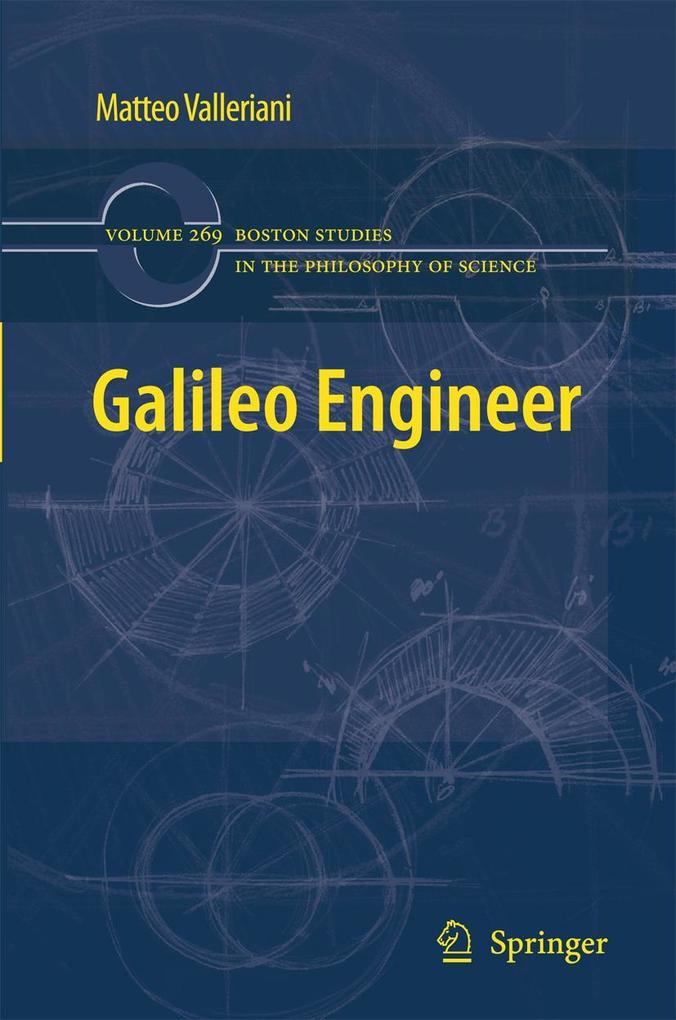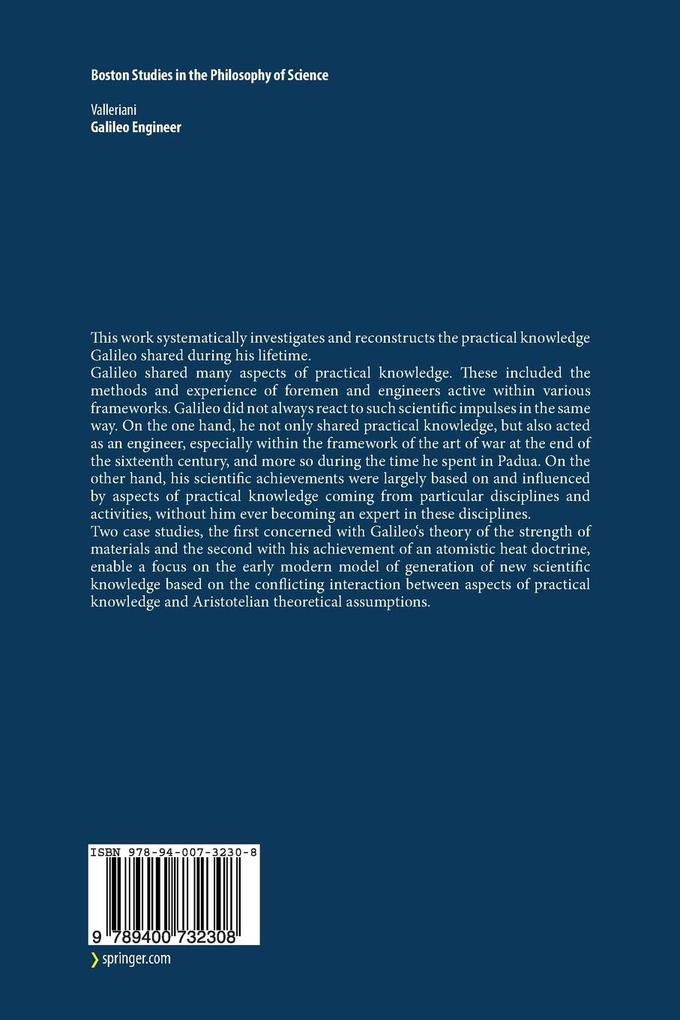Galileo's scientific achievements were largely based on and influenced by his activities as an engineer and the practical knowledge he shared from this context, first in Florence, then in Padua and finally again in Florence. After an extensive analysis of the recently grounded historical category of "engineer-scientist," such a category is applied to Galileo, too. The result is that he belonged to the tradition of those theory-oriented practical mathematicians, who, challenged by the practical knowledge, approached it by making use of mathematical means and, in doing so, generated new scientific knowledge.
After an analysis of Galileo's early education, the work establishes and analyses Galileo's main fields of practical activities; his contributions to the art of building and evaluating machines, mathematical and optical instruments; his activities related to the work of the artillerists and of the military architects; his connections to the Venetian Arsenal and his involvement in the fields of pneumatics and thermoscopics.
The work is based on primary sources and, among these, Galileo's correspondence plays a major role. All of the letters that are particularly relevant for the understanding of Galileo as an Engineer have been translated in English for the first time and appended to this work.
Galileo Galilei (1564-1642), his life and his work have been and continue to be the subject of an enormous number of scholarly works. One of the con- quences of this is the proliferation of identities bestowed on this gure of the Italian Renaissance: Galileo the great theoretician, Galileo the keen astronomer, Galileo the genius, Galileo the physicist, Galileo the mathematician, Galileo the solitary thinker, Galileo the founder of modern science, Galileo the heretic, Galileo the courtier, Galileo the early modern Archimedes, Galileo the Aristotelian, Galileo the founder of the Italian scienti c language, Galileo the cosmologist, Galileo the Platonist, Galileo the artist and Galileo the democratic scientist. These may be only a few of the identities that historians of science have associated with Galileo. And now: Galileo the engineer! That Galileo had so many faces, or even identities, seems hardly plausible. But by focusing on his activities as an engineer, historians are able to reassemble Galileo in a single persona, at least as far as his scienti c work is concerned. The impression that Galileo was an ingenious and isolated theoretician derives from his scienti c work being regarded outside the context in which it originated.
Inhaltsverzeichnis
War and Practice. - Artist-Engineers Apprenticeship and Galileo. - Instruments and Machines. - Galileo s Private Course on Fortifications. - Practice and Science. - The Knowledge of the Venetian Arsenal. - Pneumatics, the Thermoscope and the New Atomistic Conception of Heat. - The Engineer and The Scientist. - Was Galileo an Engineer? .











